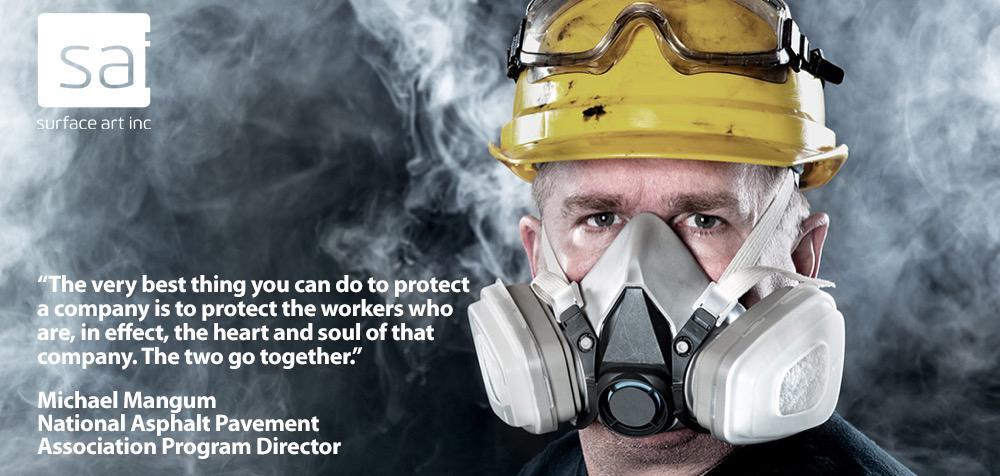The Silica Standard

ARE YOU FOLLOWING THE SILICA STANDARD?
Crystalline silica is a basic component of soil, sand, granite, and many other minerals. Materials such as concrete, sand, mortar, and stone contain crystalline silica. It is also used to make products such as glass, pottery, ceramics, bricks, and artificial stone.
Respirable crystalline silica means airborne particles in the atmosphere that contains crystalline silica. Three dust fractions are considered when assessing dust: the inhalable, thoracic and respirable. Respirable dust fraction refers to the proportion of an airborne contaminant that penetrates to the deep lung. This is why respirable crystalline silica is extremely concerning to human health.
WHAT ARE THE HAZARDS OF CRYSTALLINE SILICA?
Silica exposure is a serious threat to nearly 2 million U.S. workers. Crystalline silica has been classified as a human lung carcinogen. Breathing crystalline silica dust can cause silicosis. Workers who inhale these very small crystalline silica particles are at increased risk of developing other serious silica-related diseases as well including lung cancer, chronic obstructive pulmonary disease (COPD), and kidney disease.
WHAT IS SILICOSIS?
When silica dust enters the lungs, it causes the formation of scar tissue, which makes it difficult for the lungs to take in oxygen. Silicosis typically occurs after 15–20 years of occupational exposure to respirable crystalline silica. Symptoms may or may not be obvious; therefore, workers need to have a chest x-ray to determine if there is lung damage. As the disease progresses, the worker may experience shortness of breath upon exercising. In the later stages, the worker may experience fatigue, extreme shortness of breath, chest pain, or respiratory failure. Due to the fact that silicosis affects the immune system, exposure to silica increases the risk of lung infections, such as tuberculosis. There is no cure for silicosis.
WHAT IS BEING DONE TO PROTECT WORKERS?
To better protect workers exposed to respirable crystalline silica, OSHA has issued two new respirable crystalline silica standards: one for construction, and the other for general industry and maritime. OSHA began enforcing most provisions of the standard for construction on September 23, 2017 and will begin enforcing most provisions of the standard for general industry and maritime on June 23, 2018.
HOW MUCH EXPOSURE DOES OSHA DEFINE AS ALLOWABLE BY THE NEW SILICA STANDARD?
Workers’ permissible exposure limits (PEL) are limited to 50 micrograms of respirable crystalline silica per cubic meter, averaged over an 8-hour working day.
IS THE DRY CUTTING TECHNIQUE A RECOMMENDED TECHNIQUE FOR MINIMIZING CONTACT WITH RESPIRABLE CRYSTALLINE SILICA?
No, OSHA does not recommend this technique. If dry cutting cannot be avoided, be sure to utilize the aid of an industrial hygienist or another qualified environmental professional prior to such cutting.
WHAT CAN EMPLOYERS/EMPLOYEES DO TO PROTECT AGAINST EXPOSURES TO CRYSTALLINE SILICA?
- Replace crystalline silica materials with safer substitutes, such as Surface Art’s JetBacker and TILITE Shower Board.
- Provide engineering or administrative controls, where feasible, such as local exhaust ventilation, and blasting cabinets. Where necessary to reduce exposures below the PEL, use protective equipment or other protective measures.
- Use all available work practices to control dust exposures, such as water sprays.
- Wear only an N95 NIOSH certified respirator, if respirator protection is required. Do not alter the respirator. Do not wear a tight-fitting respirator with a beard or mustache that prevents a good seal between the respirator and the face.
- Wear only a Type CE abrasive-blast supplied-air respirator for abrasive blasting.
- Wear disposable or washable work clothes and shower if facilities are available. Vacuum the dust from your clothes or change into clean clothing before leaving the work site.
- Participate in training, exposure monitoring, and health screening and surveillance programs to monitor any adverse health effects caused by crystalline silica exposures.
- Be aware of the health hazards related to exposures to crystalline silica. Smoking adds to the lung damage caused by silica exposures.
- Do not eat, drink, smoke, or apply cosmetics in areas where crystalline silica dust is present. Wash your hands and face outside of dusty areas before performing any of these activities.

For more information please visit:
https://www.osha.gov/dsg/topics/silicacrystalline/